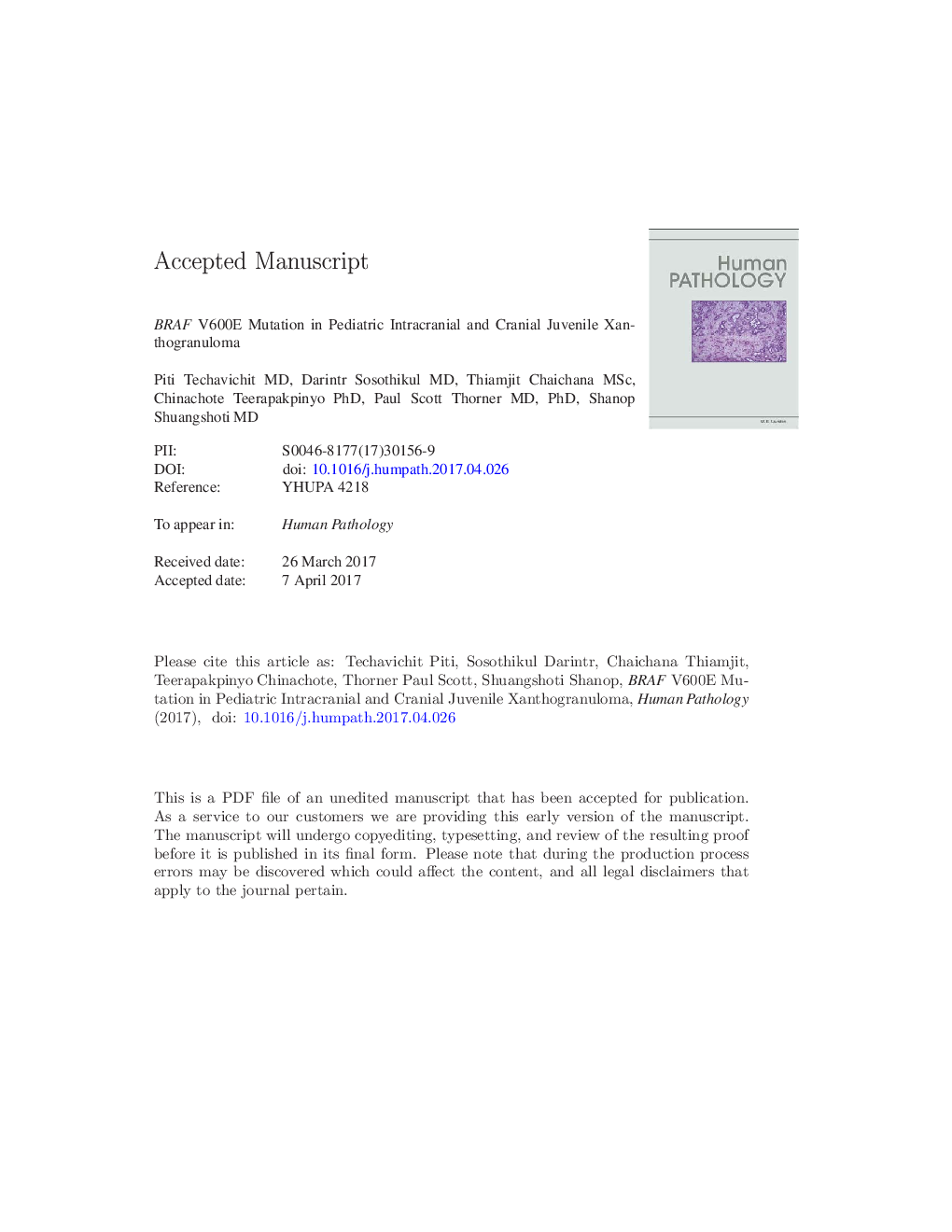| Article ID | Journal | Published Year | Pages | File Type |
|---|---|---|---|---|
| 8807757 | Human Pathology | 2017 | 17 Pages |
Abstract
Juvenile xanthogranuloma (JXG) is a cutaneous form of non-Langerhans cell histiocytosis, primarily affecting children. The lesion is presumed to originate from either macrophages or dermal dendritic cells. JXG can rarely present as an isolated intracranial lesion and, in contrast to the dismal outcome of patients with systemic disease, cranial JXG has been shown to carry a more favorable prognosis. Here, we report for the first time 3 pediatric cases of JXG with a BRAF V600E mutation, 2 with intracranial lesions and 1 with cranial lesions. Although these intracranial/cranial lesions have been referred to as JXG, they likely differ from cutaneous JXG in both the clinical features and BRAF status. It may be more appropriate to classify intracranial/cranial JXG in the same group as Langerhans cell histiocytosis and Erdheim-Chester disease, which also have a BRAF V600E mutation. Further study of BRAF status in a larger series of JXG is warranted.
Related Topics
Health Sciences
Medicine and Dentistry
Pathology and Medical Technology
Authors
Piti MD, Darintr MD, Thiamjit MSc, Chinachote PhD, Paul Scott MD, PhD, Shanop MD,
